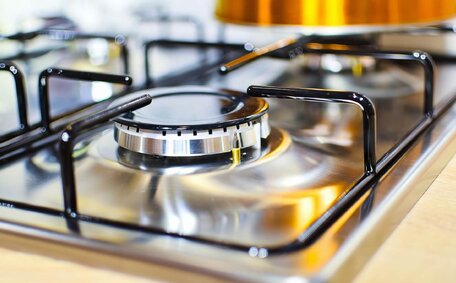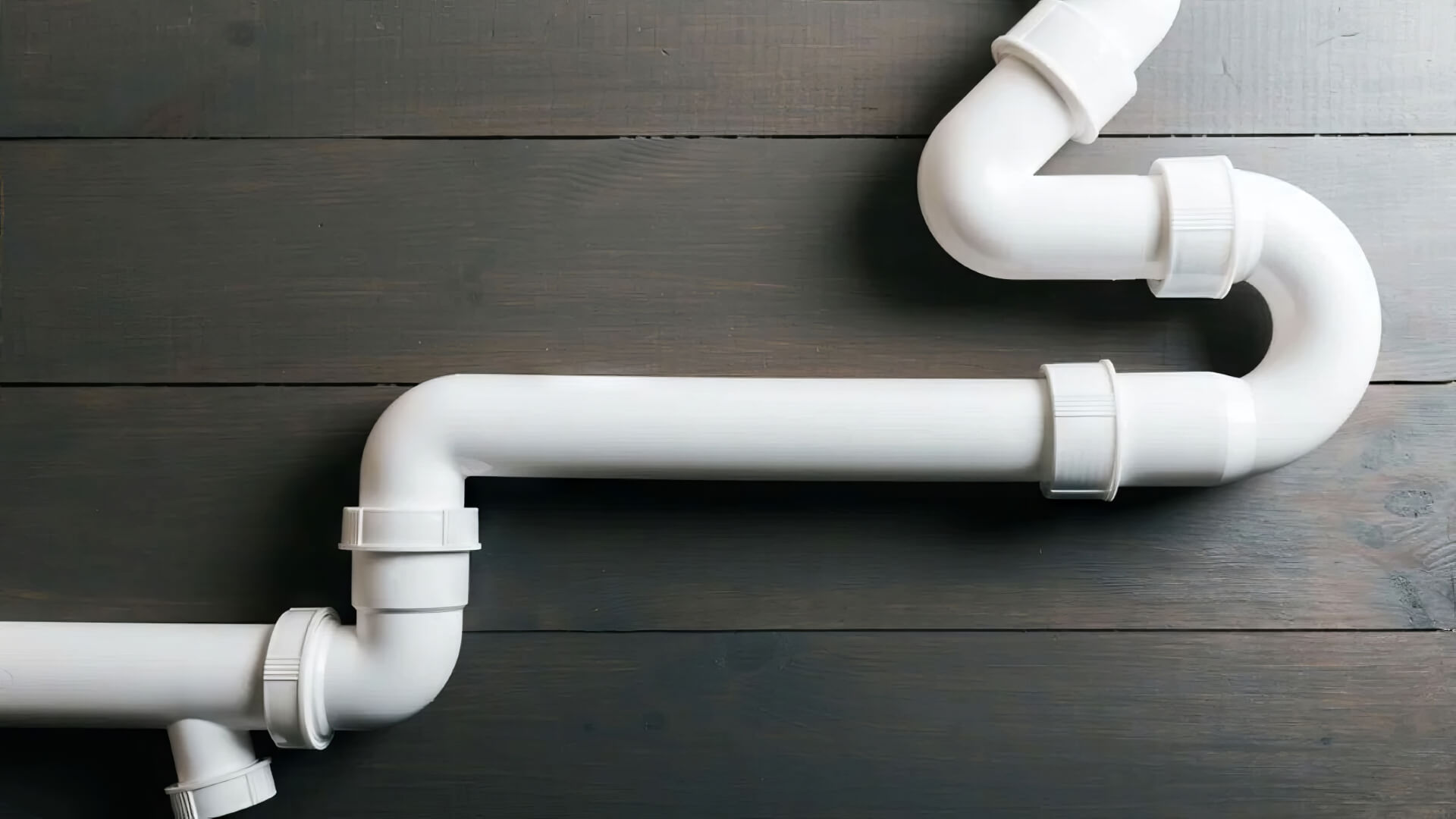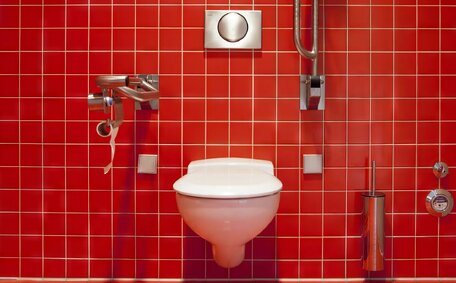Introduction to Gas Cooktop Installation
Installing your new gas stove introduces convenient cooking options to your kitchen. Gas stove burners quickly heat and offer precise temperature control, outperforming induction and traditional electric models.
Proper installation by qualified professionals ensures the safety of your new cooktop; rest assured, gas cooktops are inherently safe when correctly set up. At Campbelltown Plumbing, our professional team brings over 10 years of experience in installing gas cooktops and appliance repair for gas models across Campbelltown and surrounding suburbs. Our experienced and licensed gas fitters prioritise safety, meticulously addressing all your gas connection needs.
This guide will navigate you through the comprehensive process of installing your gas cooktop, covering all technical details. We’ll discuss the gas, electrical, ventilation and cabinet requirements to ensure your gas stove is set up perfectly. To discuss your upcoming installation or for advice on selecting your ideal gas cooktop, call Campbelltown Plumbing on 1300 349 338.
Understanding Gas and Electrical Requirements
When installing gas cooktops safely and effectively into your existing gas setup, specialised electrical connections are imperative. Here are the key requirements:
Gas Supply
We recommend a rigid 12-millimetre natural gas pipe to ensure your cooktop receives an adequate gas flow. A cooktop can also be connected using a flexible gas line with stainless steel connectors in line with manufacturer specifications. Using approved pipe sealant or pipejoint compound is essential for securing gas fittings against leaks and ensuring tight closures.
Electrical Supply
Although most gas cooktops do not require a dedicated 220-240V power point, check the fuse box for models with special features, like convection fans, that may need it. Check your cooktop’s manual for proper fuel source and electrical connection usage, which may include new wiring or a junction box assembly.
Ventilation
Securing a range hood over your cooktop satisfies ventilation requirements crucial for maintaining indoor air quality. Downdraft or overhead range hoods remove combustion byproducts and steam produced during cooking. Vent outdoors wherever possible for the best performance of your gas port range.
For expert assistance with gas stove installation in the Campbelltown region, call your local gas specialists at Campbelltown Plumbing for support with all requirements. Contact us on 1300 349 338 for advice and quotes.
Choosing the Right Size Cooktop
Selecting the right size for your new gas cooktop is critical for functionality and aesthetic appeal. Standard widths to transition from electric to gas cooktops come in sizes of 30 inches (76 cm), 36 inches (91 cm), and 48 inches (122 cm).
Consider how long your old countertop cutout size has been in place if you’re replacing an outdated model with a state-of-the-art gas cooktop. The width of your new cooktop should match the existing space.
Verifying the necessary installation clearance is important. Gas cooktops need open space your underneath for combustion and airflow, typically at least 12 inches (30 cm) from the bottom edge to enclosed cabinetry. There should also be ample room at the front edge and back edge for gas line connections.
The overall depth of your cabinetry is another factor. Standard depth is 25 inches (64 cm), but deeper 30-inch (76 cm) cabinets allow fitting larger gas cooktops. This provides more burner space for simultaneous pots and pans while cooking.
Getting the sizing right avoids wasted space or gaps that disrupt your kitchen’s flow. With over 10 years experience in gas appliance installations, Campbelltown Plumbing can provide advice tailored to your cooking needs and kitchen layout.
Planning Adequate Clearances
Ensuring enough open space for safe gas cooktop install is crucial for both safety and functionality. The minimum clearance between the cooktop and side/rear walls is critical for installation. Typically, it’s 10-12 inches. There should also be at least 30 inches clearance between the cooktop surface and any overhead cabinets or range hoods.
These minimum clearances vary depending on your cooktop model but they do more than prevent accidental contact during use; they also preclude potential burns. They also allow proper ventilation to remove gas fumes. Insufficient clearance risks gas buildup or fires igniting nearby cabinets.
Before starting installation, our Campbelltown Plumbing team will carefully evaluate your kitchen layout. We ensure ample clearance for daily cooking and optimise your available kitchen space.
Preparing the Countertop
Before installation, make sure your countertop is precisely trimmed to match the cooktop’s required dimensions. Use the cooktop’s dimensions and installation guide to mark the cutout, allowing an extra 1/8 inch on each side for easy adjustments during installation.
For laminate counters, use a jigsaw to pull out the cut lines and remove the opening, secured with adhesive tape to avoid chipping. Start by drilling holes for guidance and remove any foil tape attaching the laminate to the base cabinets.
Stone slabs like granite require specialised cutting tools for the countertop opening. Stone slabs like granite require specialised cutting tools.
Ensure the opening allows the cooktop to sit flush with the countertop surface. Diligently cleanse and prep the cutout zone before you nestle your gas cooktop into its new home. Apply a bead of non-hardening sealant around the edges to prevent liquid spills from seeping under the cooktop.
With 10+ years experience to install gas cooktops in the Campbelltown region, Campbelltown Plumbing can expertly cut your chosen countertop material. Contact us to discuss your upcoming gas cooktop installation.
Securing and Connecting the Cooktop
After preparing the countertop and securing adequate clearances, position the gas cooktop, making sure all gas connections align correctly. Most models feature mounting brackets at the base, which attach to the cabinets with screws during installation.
Refer to the installation manual for up-to-date step-by-step directions, including advice on connecting black gas pipe if applicable, even if you have an electric induction cooktop. After installation, check your work to ensure how install was executed leaves the gas electric unit sitting flush and doesn’t wobble.
Before beginning, confirm that the gas valve is closed and apply yellow Teflon tape to the joints for a secure gas supply connection.
Employ a 1/2-inch stainless steel gas hose with an end connector fitting, or opt for rigid right angle pipe alongside elbow joints, ensuring you shut off gas flow before making any adjustments.
Securing fittings according to gas certification standards like AS/NZS 5601.1 is critical for compliance and safety. If in doubt, contact a trusted local gas company like Campbelltown Plumbing to ensure safe and compliant installation.
Testing for Gas Leaks
Following the installation of your new gas cooktop, it is essential to thoroughly inspect all gas fittings for leaks. We recommend customers purchase a liquid gas leak detector solution, which is commonly sold at home centers, to inspect every gas fitting on their gas cooktop and water heater. Apply the solution along all connection points on the newly installed gas line and fittings.
Inspect for bubble emergence, which could signal there gas leak presence. Large and consistent bubbling signifies a major leak that requires immediate repair. Smaller bubbles may indicate a loose fitting that simply needs tightening.
If using an electronic gas detector, listen for any ticking sounds that alert to gas presence.
Testing for leaks with your local gas safety standards in mind ensures there’s no gas build-up presenting a safety hazard or risk of explosion. Never ignite the cooktop burners unless all connections are completely leak-free. As your local licenced gas fitters, Campbelltown Plumbing performs detailed leak checks as standard after each cooktop installation.
Tips for Smooth Installation
Here are some tips to ensure a smooth installation of your gas oven or cooktop:
- Verify the appliance dimensions to ensure the new model fits seamlessly into the designated space and allows for proper gas and other connections
- Assemble all necessary tools - drill, drivers, saw, pipe cutters, sealant, etc.
- Carefully review the installation manual and plan each step
- Turn off the line shutoff valve to shut off gas and electricity to the cooktop space before initiating the process
- Wear safety glasses and work gloves, or consider seeking professional help to protect yourself
- Clean up the area thoroughly and lay down drop cloths to catch debris
- Go slowly and double check connections before turning gas back on
- Keep our number handy as unexpected issues can arise even for experts
Adhering to these installation tips can prevent accidents and guarantee long-term safe operation of your cooktop. Contact Campbelltown Plumbing on 1300 349 338 for full installation services.
Finishing Touches and Safety Checks
After successfully installing your new gas cooktop, it’s important to complete a few finishing touches to ensure safe and seamless operation.
Cosmetic Accommodations
Make any necessary cosmetic adjustments around the newly installed cooktop. For example, you may also need to reattach portions of backsplashes that were disconnected during the installation process. Verify that the cooktop sits flush with your existing countertop.
Functionality Checks
Conduct a complete functionality check by igniting each cooktop burner individually. Test the low and high flame settings. Ensure the electronic ignitions consistently spark and light each burner.
Ventilation Verification
Confirm your ventilation hood is operating correctly by turning it on high setting. Feel for adequate airflow while the burners are lit to remove all combustion byproducts.
Gas Leak Re-check
Perform another leak test by applying gas leak detector solution to all gas fittings and connections. Watch for bubble formation and address any leaks before proceeding to confirm there’s no gas leak.
To complete the installation, our licenced gas fitters at Campbelltown Plumbing follow meticulous finish and safety checks. Trust in our decade of experience for safe and compliant gas cooktop installations. For complete installation or appliance servicing, contact us on 1300 349 338.






